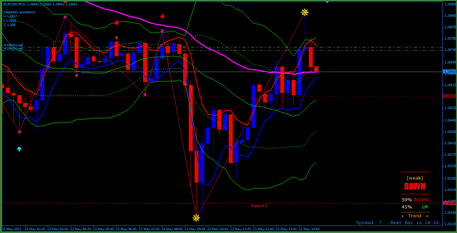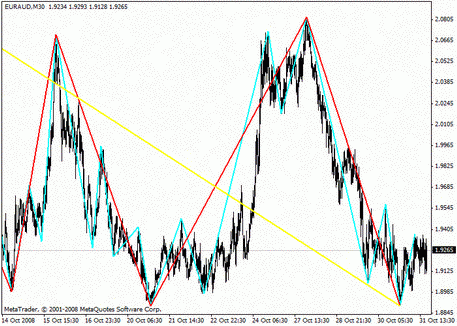
How to Exit the Position
Saturday, 15 July 2017 18:15
Both experienced Forex traders and the newcomers face the fact that opening a deal is not the only condition for a profitable trading. When the position is closed, traders are exposed to the emotional factors. On the one hand, they may be tempted to earn more, expecting the further price movement in the profitable direction. On the other hand, a trader may fear of a price reversal or losses. Anyway, the correct way out of the position will help a trader to control his profits and losses. It's possible to fulfill your trading tasks only based on the proper trading strategy.
We can distinguish two types of exiting the position in Forex - a full exit and a partial one. Both methods have the advantages and disadvantages.
Full exit
When a transaction is fully closed, a trader enters the trade with two lots and leaves the position with two lots, as soon as the price reaches the target value. Further, it makes sense to wait for the favorable conditions to make a new deal.

The advantages of such tactics include the lower risk of mistakes, easy management, and the ability to save profits during the price fluctuations or reversals. On the other hand, if the price continues to move in the right direction, the trader will miss the chance to increase the profits.
This method is more suitable for trading within the range.
Partial output
In this case, a trader has a lot divided into three parts.
When you open a position, the stop-loss level is set immediately. When the price reaches the desired level of profit, the first part of the lot is closed, and the stop-loss moves to the zero loss-level, plus the amount of spread.
The second part of the lot is closed when the risk-to-profit ratio is 1:3. That is, if the stop loss was set at 20 points at the beginning, then the exit is made on a level of 60 points from the initial price. It should be noted that waiting for the right moment requires the psychological stability and endurance.

The last part of the lot remains on the market. You can't predict where the market will move. Next, this part of the lot may not bring profit at all, or bring a great profit as well. At the day trading, the position is tracked until the end of the day, with either the stop-loss moved manually or an automatic trailing stop set. Making a purchase, a trader leaves the stop-loss fixed until the price increases relative to the previous high, which helps a trader to avoid the stop-loss triggering under the impact of minor price fluctuations:

With this method, a trader uses the movement of the trend, increasing his profits dynamically. It's best to use this technique within the high trend changes. In the more volatile conditions, you can achieve the goal on the first part of the lot, remaining in the zero-loss zone on the rest.
It's worth mentioning other strategies with fixed stop-losses, or with no take-profits. Many methods could be suitable for some traders while having its drawbacks. Don't forget about the very nature of the market. It is unpredictable and always involves a particular risk.
Share
Related articles
- Previous article: How to Set a Stop-Loss Correctly
- Next article: Secrets of Reducing the Drawdowns

 English
English
 русский
русский





